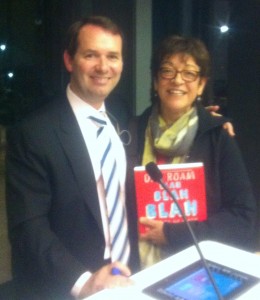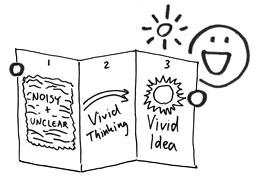Stanford Crash Course on Creativity – Creative Story Telling – Week 7
“Let me tell you a story…” Six great words to start off any presentation. People love stories, and that phrase primes them to pay attention to what you are about to say. Stories draw people in, they bring ideas to life and keep them memorable. According to Tina Seelig, Executive Director, Stanford Technology Ventures Program and leader of this course, “Most successful leaders are effective storytellers. They use stories to engage their colleagues, their customers, and their constituents.”
Stories are particularly helpful to use when presenting ideas people haven’t heard before. The better the story you tell about your idea, the better the presentation, and the greater the likelihood people will be thankful for spending time with you.
Story Telling Pointers
- You have to have a hook – something that’s surprising, funny, sad, enraging – the hook compels the listener leveraging their emotion and stirs their feeling of curiosity to learn more
- Show, using images, and not tell using words
- Use videos and music – the music sets the tone for the story
- Use suspense and surprises to keep everyone engaged; like your uncle Harry during family camping trips when you were a kid. Remember how he spun tales around the glowing embers of the campfire? Using suspense and surprise let’s people use their imagination, really.
Why not try it on for size? Why not craft a story to present your next new idea?
About Story Telling
Jack Dorsey, co-founder of Square and Twitter explains the value in writing a story from the user’s perspective. He discusses Square’s vital use of narratives to understand what customers truly experience when using the product. According to Dorsey, all of a company’s other strategies and tactics should grow naturally out of these powerful user narratives.
Seen what Seth Godin has to say about stories? Here’s his take. Got good points.
Stories to Assess
These questions are for you to use when you watch these two storytelling examples. Use them too, as a guide for crafting your tales.
- Is there a hook? What is it?
- How does the video make you feel?
- Are there surprises?
- How does the music work with the story?
- Is there a resolution at the end of the story?
- Is it a video you would want to share with others? or a story you want to pass along?
An Aside
This week I attended a lecture by Dan Roam, author of Blah, Blah, Blah and other titles, who showed simple ways to use drawing instead of words to convey new ideas. Dan said the brain is 75% oriented to visual and suggested successfully engaging others involves using drawings. He led us through an engaging hour practicing doing just that.
Check out his work for new ideas, especially if you are feeling a little stale and want to brighten up.
Hey, how’s about this
- Craft a story to sell a new idea to someone
- Create a portrait of the story using Dan’s approach
- See which one works better for you and your intended audience.
Fun, eh?
Marci Segal, MS, Creativity and Change Leadership, Freeing leaders thinking so they can create new futures (who has a story or two to tell about innovation and creativity and presenting ideas in brand new ways. HUGE successes. Got a minute?:-))
Related articles





Creative Storytelling: https://creativityland.ca/2012/stanford-crash-course-on-creativity-creative-story-telling-week-7/